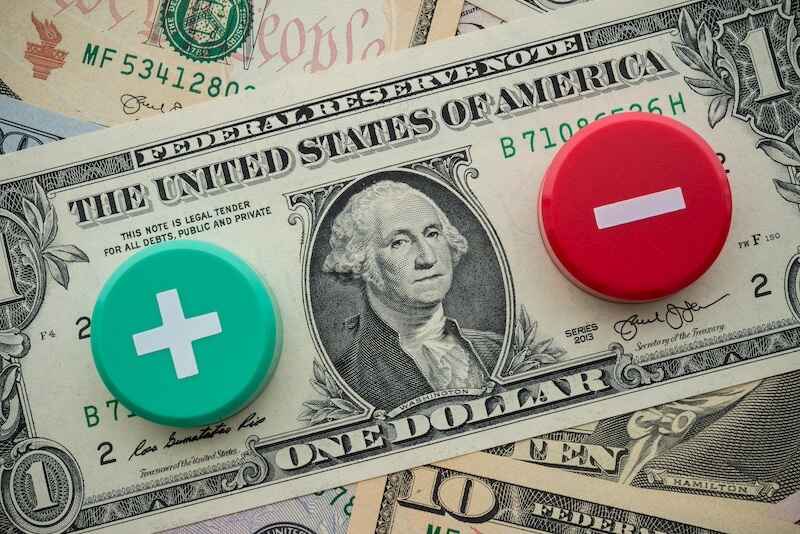Though many dollar bears predicted a weaker greenback in 2024, it’s been a good year for the U.S. currency.
That’s despite the fact that a group of nations met a year ago with plans to end the dollar’s dominant role in the global economy.
They were unsuccessful – and the dollar is up more than 3% this year as measured by the U.S. Dollar Index, which tracks the U.S. currency against a basket of other nations’ currencies.

Why has the dollar gained strength?
For starters, the U.S. economy recovered from the COVID-19 pandemic faster than most other nations. And the Federal Reserve has been slower than other major central banks to move toward lower interest rates.
Both of those factors have resulted in increased capital flows to the U.S. – which in turn, have driven the dollar higher relative to other currencies.
But the rising dollar trend may not last…
Trump Looms
That’s because it’s becoming clear that, should Donald Trump win back the presidency in November, a central economic and trade policy of his administration could be dollar devaluation.
Multiple reports have emerged in recent months claiming that economic advisors to Trump are mulling ways to weaken the dollar against the currencies of major trade partners.
This could be done through currency market interventions (selling dollars in global markets), or by using the threat of tariffs to force other nations to strengthen their currencies against the dollar. Or even by leaning on the Fed to cut interest rates faster, which would weaken the dollar.
Chief among these advisors is Robert Lighthizer, former U.S. Trade Representative in Trump’s first term (and a leading candidate for Treasury Secretary in a second Trump term).
And if you’re dubious about what the mainstream media says about Trump administration officials (as we all should be), merely check Lighthizer’s book, No Trade is Free. He writes at length about the many problems he believes “the chronically overvalued U.S. dollar” has caused the nation.
According to Lighthizer, the biggest of those problems is the ongoing trade deficits the U.S. runs, especially in manufactured goods.
Boosting Exports
A weaker dollar would make imports more expensive and U.S. exports to the rest of the world cheaper – thereby reducing the trade deficit, and “reshoring” some of the manufacturing jobs that have left the nation over the past three decades.
Fair enough. There is certainly something to that. And it’s been done before.
In the famous 1985 Plaza Accord, the U.S. strong-armed major trading partners into intervening in currency markets to weaken the dollar and help U.S. industry compete with the rest of the world.
It’s not yet clear if that’s the course Lighthizer as Treasury Secretary would take to weaken the dollar.
But no matter what route Trump officials might choose, a weaker dollar would have significant consequences for investors.
Here are a few tweaks you can make to your portfolio to brace for a falling dollar… and even profit from it:
- Add to your gold holdings. Commodities, including gold, are often negatively correlated to the dollar – they rise when it sinks and vice versa. That’s primarily because commodities are priced in dollars in international markets, so their prices rise when the dollar weakens. This is especially true for gold, as many investors seek it as a haven when the dollar weakens. From 1974 to 2019 – in years when the dollar rose – the price of gold fell an average of about 1%. But in years when the dollar was down, gold rose almost 18% on average.
- Beef up your allocation to foreign stocks. Foreign stocks also tend to rally in years when the dollar is down. They rose almost 19% on average (1974-2019) in weak dollar years. By contrast, foreign stocks rose only 2% on average in years when the dollar strengthened.
- Invest in U.S. exporters. Because a weaker dollar makes their products cheaper in global markets, they too should benefit. Industrials and aerospace stocks could be big winners from a weaker greenback. For example, about half of Caterpillar’s (NYSE: CAT) revenue came from outside North America last year. And sales outside the U.S. account for almost 60% of General Electric’s (NYSE: GE) revenue.
- Think about reducing your exposure to companies that are heavily reliant on imports. Their revenues and income would suffer if the dollar weakened. These include many retailers in the consumer discretionary sector. They get only a small portion of their revenue from exports but will have to pay more to stock their shelves with imports.
Walmart (NYSE: WMT) is the poster child for this. The retailing behemoth depends on China and India for most of its non-grocery merchandise. Target (NYSE: TGT) and Amazon (Nasdaq: AMZN) would also suffer from a weaker dollar and the new tariffs on China that Trump is talking about.
Keep in mind that none of the relationships between these asset classes and the strength of the dollar are ironclad. Other factors can also move foreign stocks and commodities higher or lower.
Also bear in mind that markets for all of these assets are forward-looking. So their prices will adjust far in advance of any policy action taken to devalue the dollar.
That means that you’ll want to tweak your portfolio now… not after prices have changed.
Invest wisely,
Matt
